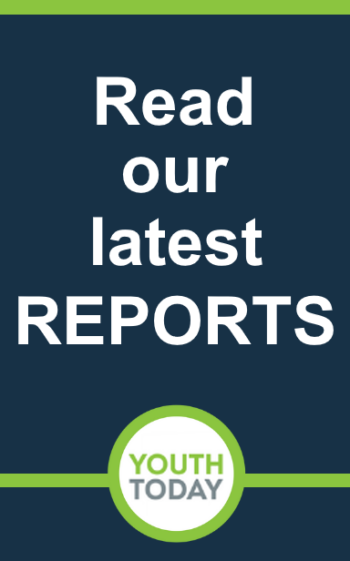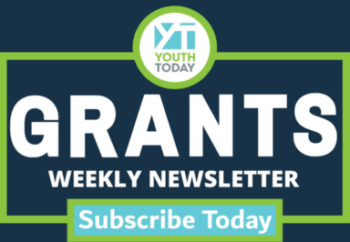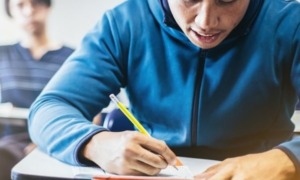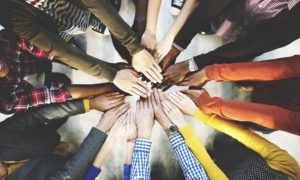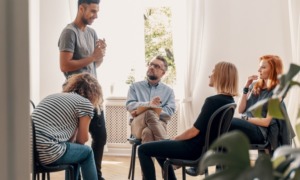Beginning in 1987, the Foundation concentrated its grantmaking on OST programs in New York City that addressed, or wished to address, youth literacy. Historically, OST programs have served the important function of providing a safe place for youngsters to engage in leisure activities with supportive adults. A growing number of such programs, responding to parents’ concerns about their children’s success in school, began to include educational support among their offerings and to function as a critical link between home and school. The Foundation sought to have a long-term and substantial effect on the field of OST education, and the first priority was to support programs that make literacy education an integral part of their work, provide quality experiences for young people, and seek to evolve as learning organizations by supporting the ongoing development of participants, staff, families, and communities as learners. Through grants and technical assistance, the RBF sought to build programs’ capacity to support literacy development.
Literacy was defined as engagement in reading, writing, listening, and speaking in order to better understand oneself, others, and the world. Literacy takes many forms as it develops according to principles we believed to be fundamental:
- Becoming literate is a gradual process that begins with our first interactions with language — spoken and written. As children, there is no fixed point at which we suddenly become literate. Instead, all of us bring our understanding of spoken language, our knowledge of the world, and our experiences in it to make sense of what we read. We grow in our ability to comprehend and interpret a wide range of reading materials by making appropriate choices from among the extensive repertoire of skills and strategies that develop over time.
This description is consistent with the National Council of Teachers of English (NCTE) and the International Literacy Association (ILA) positions and guidelines on reading. The Foundation adapted them to help prospective grantees understand what was meant by literacy. Additional beliefs included:
- Literacy happens in community. The OST programs that were supported were typically part of community-based organizations with deep roots in their neighborhoods. An OST program can, for example, enable children of immigrants to explore the values and cultures of their home and adopted cultures through literature, song, dance, and art.
- Literacy develops through active engagement. The supported OST programs got children to do things. Programs can get children who are stuck indoors and whose recess takes place on asphalt out into the open air of the Bronx River bank to row boats that they built or to conduct science experiments.
- Literacy is a means to self-determination. The supported OST programs were youth-centered — youth provide leadership and take a central role in designing activities. Such programs can affirm adolescents’ selfhood and their solidarity with others through group sharing and service projects, or bring shy pre-adolescents out of their “shell” by performing in a play they composed with their peers.
- Literacy is a fundamental part of being human in 21st century America. The supported afterschool programs integrate literacy with a wide variety of activities, from sports to career exploration to the arts and beyond. Such integration not only engages children but also illustrates that literacy is not a set of isolated skills useful only in school.
Quality programs reflect the communities and children they serve. Literacy behaviors and activities look different in every program. In her book, Community Counts: How Youth Matters for Youth Development, Milbrey MacLaughlin describes youth programs that are very similar to the types of programs that the Foundation funded:
- “An arts program asks youth to research their cultural history. Young painters learn a good deal of history, gain pride in their background, and gain skills in mural making. A dance teacher encourages her students to keep journals and often starts dance sessions by having students read their writings aloud. These dancers pick up habits of writing and reading while learning hip-hop or double tap.
- “In a project focused on childcare in the community, youth read news articles on the topic and study various issues related to childcare. They read in textbooks about “stages of play” and create write-ups on their observations as classroom aides.
- “Even hard-driving sports organizations find ways to broaden the perspectives and competencies of youth. For example…team members to come to practice early to work with volunteers on homework, study for exams, or fine-tune specialized units related to their sport. Many coaches work academics into topics of great interest to their young athletes, such as nutrition and weight training. One year a basketball team had six-week units of study on: finances of the National Basketball Association, physics in the sport of basketball, and neurophysiology.”
All young people benefit from and are entitled to quality programs that support their development – intellectual, artistic, physical, emotional, and spiritual – to its fullest potential. OST programs, together with families, schools and other community supports, play a major, though too often unrecognized role in providing support to young people. Through direct grants to programs, technical assistance, and research and dissemination, the RBF sought to increase access to youth-centered, quality OST programs for all young people.
LINKS



